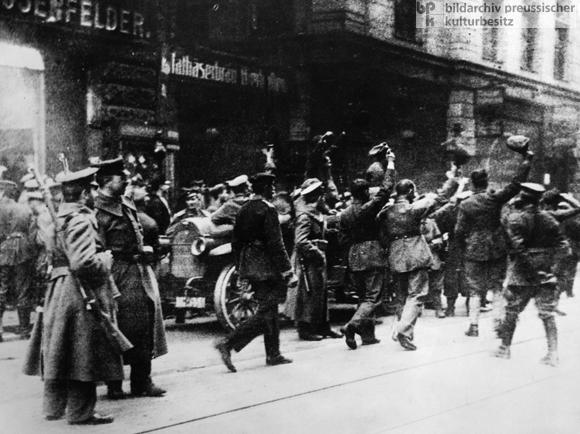













INTRODUCTION | DOCUMENTS | IMAGES | MAPS | EDITOR
|
Bavaria was the first territory in the German Empire in which the November Revolution ended monarchy. After a peace demonstration in Munich on November 7, 1918, a group of leftists close to the journalist and USPD politician Kurt Eisner (1867-1919) ousted Bavarian King Ludwig III (1845-1921). They sought an immediate end to the war, followed by the establishment of a parliamentary democracy. Eisner and his followers proclaimed the Free State of Bavaria, and Eisner was elected minister-president by a provisional national council, in which workers' and soldiers' councils were represented. The main goals of the new body were the preparation of parliamentary elections, support for moderate peace terms, demobilization, and the improvement of food supplies and the employment situation. Revolution soon spread from the capital, Munich, to other industrial centers (Nuremberg, Fürth, Erlangen, Augsburg, Würzburg). The elections on January 12, 1919, nonetheless showed that Eisner's provisional government did not have majority support. Before he could resign on February 21, however, he was assassinated by a radicalized student with connections to the völkisch, anti-Semitic Thule Society. The photograph, from the November Revolution some two months earlier, shows cheering soldiers in front of the Munich pub Mathäserbräu, where the Bavarian Republic was proclaimed. The photograph was taken by the Munich press photographer Heinrich Hoffmann, who would become Hitler's personal photographer in the Nazi era.
© Bildarchiv Preußischer Kulturbesitz/ Heinrich Hoffmann |
 print version
print version return to image list
return to image list previous image
previous image
